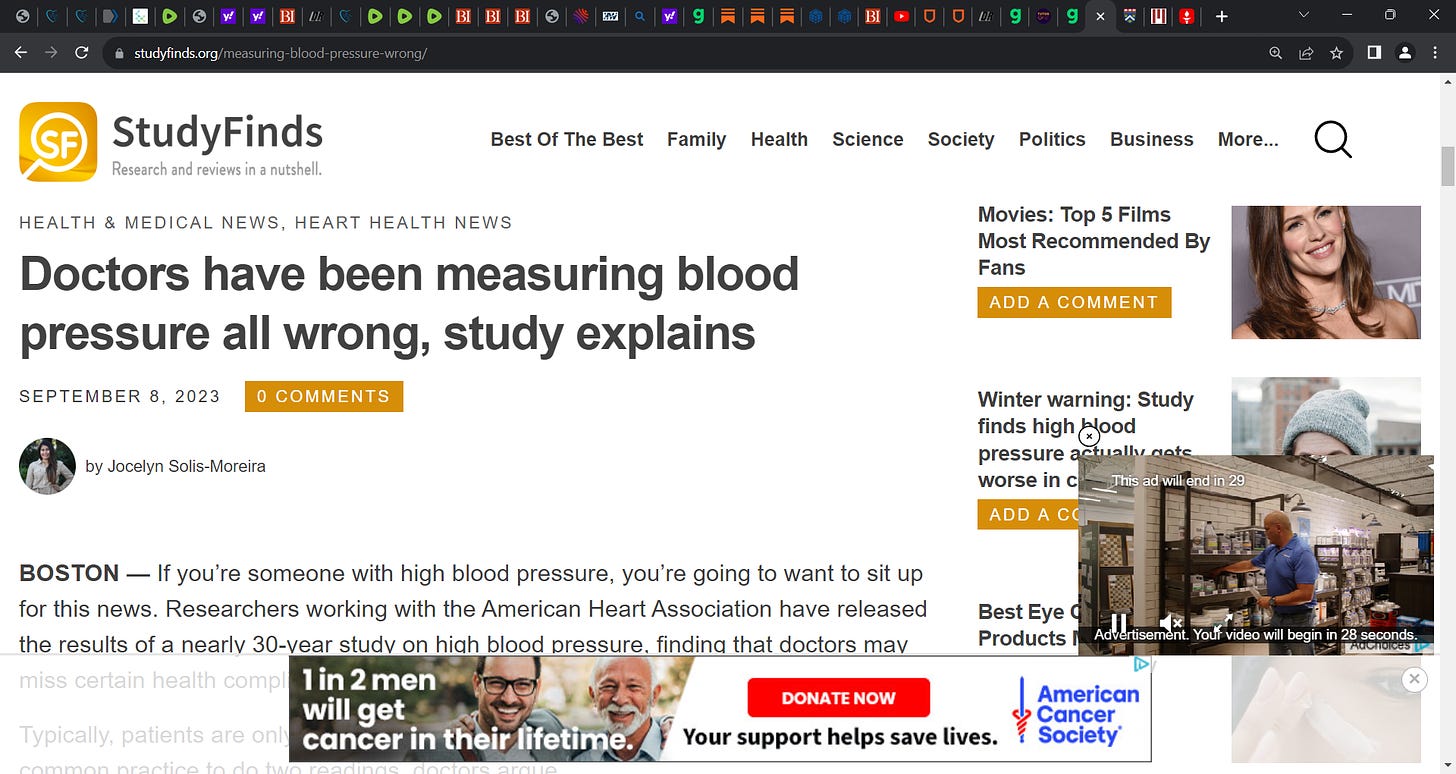Accurate optimal BLOOD-PRESSURE monitoring readings should be done while persons are sitting supine (upright) & one reading when they are lying on their backs, new Harvard study finds
by Paul Alexander
“If blood pressure is only measured while people are seated upright, cardiovascular disease risk may be missed if not measured also while they are lying supine on their backs,” says lead study author
https://studyfinds.org/measuring-blood-pressure-wrong/
BOSTON — If you’re someone with high blood pressure, you’re going to want to sit up for this news. Researchers working with the American Heart Association have released the results of a nearly 30-year study on high blood pressure, finding that doctors may miss certain health complications if they don’t have their patients lying down.
Typically, patients are only measured while sitting upright. Now, it should become common practice to do two readings, doctors argue.
“If blood pressure is only measured while people are seated upright, cardiovascular disease risk may be missed if not measured also while they are lying supine on their backs,” says lead study author Duc M. Giao, a researcher and a 4th-year MD student at Harvard Medical School, in a media release.
People who also had their blood pressure taken while lying down revealed elevated risks for heart attack, stroke, heart failure, and premature death. The type of medications people use to manage blood pressure did not impact cardiovascular risks, according to the findings.
The autonomic nervous system regulates blood pressure. However, the pull of gravity may prompt blood to pool while seated or in an upright position. Meanwhile, the body is sometimes unable to regulate blood pressure while lying down, being seated, and standing.
“Our findings suggest people with known risk factors for heart disease and stroke may benefit from having their blood pressure checked while lying flat on their backs,” Giao adds.
The first phase of the study began in 1987 and continued until 1989. A total of 15,972 adults living in the U.S. had their blood pressure taken while lying down or sitting up. One of the key features of the study was the diversity of the participants. Over half (56%) were women, and 25 percent of the participants were Black. Blood pressure data was gathered in both rural and urban clinics. Their health was then followed for an average of 25 to 28 years, with the latest health data collected between 2011 and 2013.’

